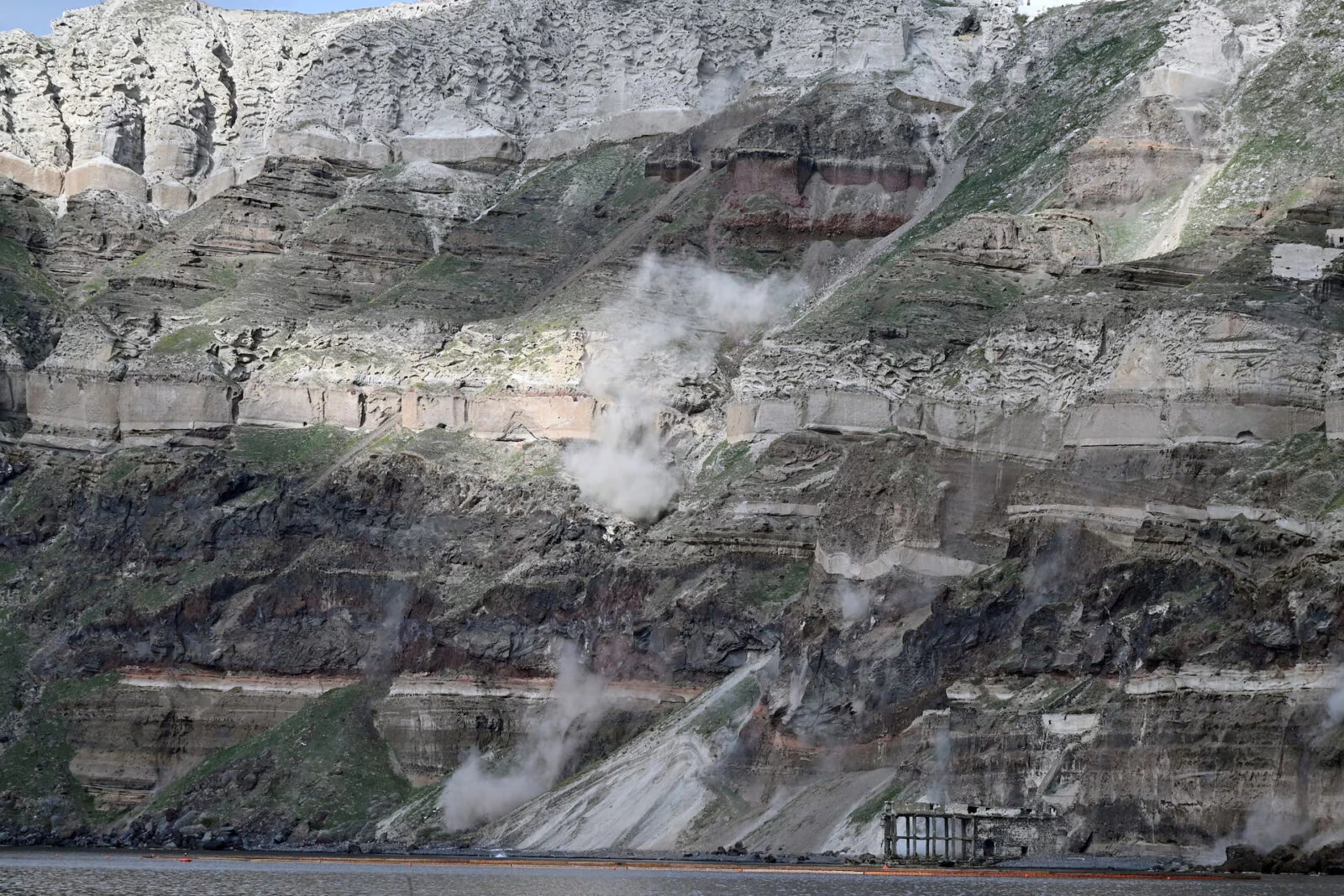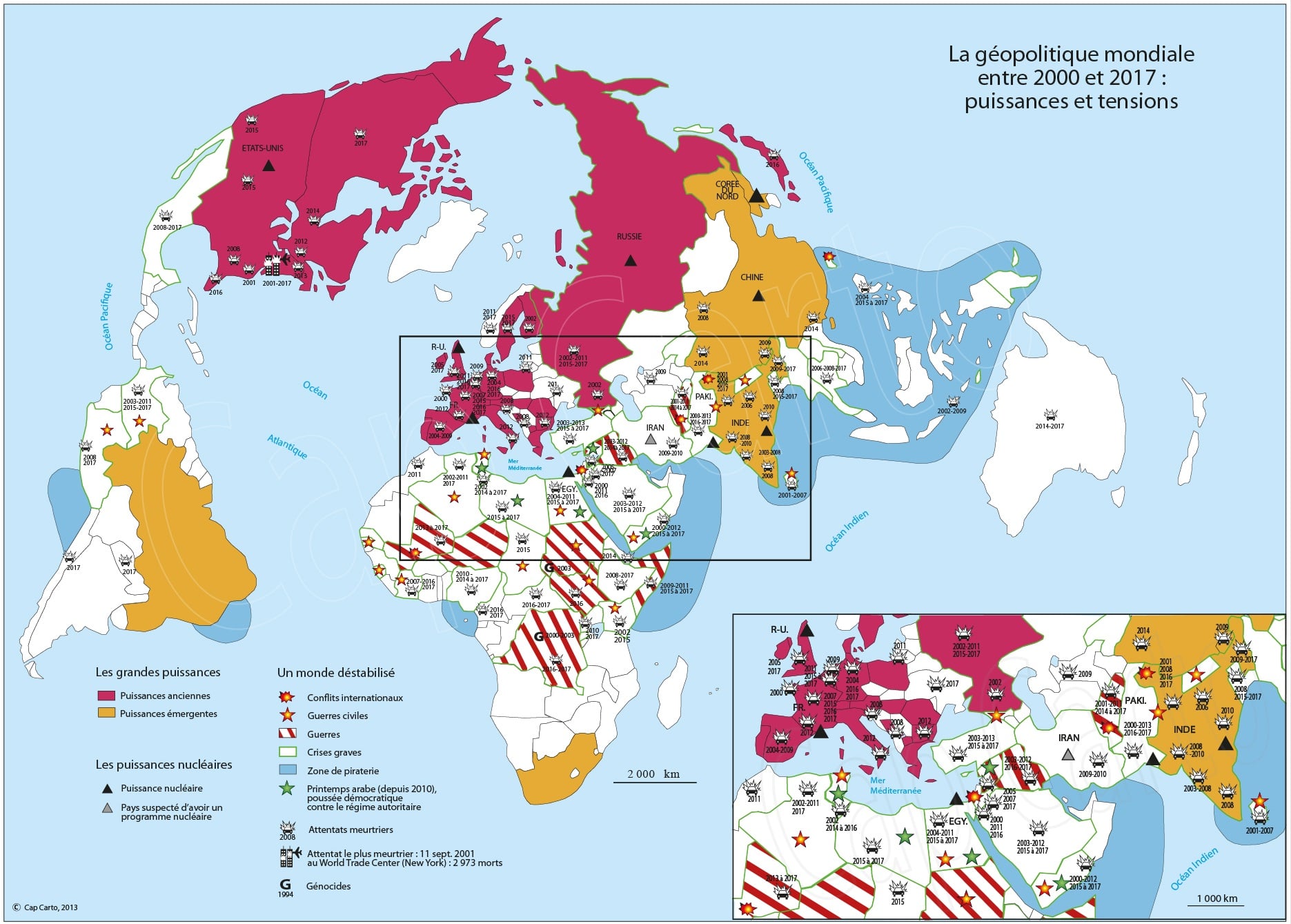Santorini Earthquake Decline: Scientific Assessment And Uncertain Future Implications

Table of Contents
Geological Factors Contributing to the Santorini Earthquake Decline
Several geological factors contribute to the observed decline in Santorini's earthquake frequency and intensity. Understanding these factors is crucial for accurate risk assessment.
Magma Chamber Pressure and Dynamics
Santorini's volcanic activity is intrinsically linked to the magma chamber beneath the caldera. Changes in magma pressure significantly influence seismic activity.
- Increased magma pressure: Can lead to increased fracturing of rocks, resulting in a higher frequency of smaller to moderate earthquakes. This pressure buildup can act as a precursor to larger events.
- Decreased magma pressure: May follow a period of volcanic activity or represent a temporary lull. This reduction in pressure can lead to a decrease in the frequency and intensity of earthquakes.
- Geophysical monitoring techniques, such as GPS and InSAR (Interferometric Synthetic Aperture Radar), are used to monitor ground deformation and detect subtle changes in the magma chamber's pressure, providing valuable insights into potential future seismic activity. However, interpreting these signals requires sophisticated analysis and isn't foolproof in predicting the precise timing or magnitude of earthquakes. A period of apparent calm could, paradoxically, signal a build-up of pressure leading to a future, larger event.
Tectonic Plate Interactions
Santorini's location in the Aegean Sea, a seismically active region, plays a significant role in its seismic behavior. The complex interplay of tectonic plates contributes substantially to the island's earthquake patterns.
- The African and Eurasian plates converge in this region, creating significant stress along fault lines. This stress accumulation is released periodically through earthquakes of varying magnitudes.
- The movement and interaction of these plates are complex, making it challenging to predict earthquake behavior with absolute certainty based solely on tectonic activity.
- While tectonic forces are constantly at play, their influence on the recent decline needs further investigation, particularly in relation to the volcanic processes within Santorini.
Volcanic Eruptions and Seismic Activity Relationship
The relationship between volcanic eruptions and seismic activity on Santorini is complex and not always straightforward.
- Historically, major volcanic eruptions have often been preceded by periods of increased seismic activity, serving as important precursory events.
- Conversely, a period of seismic quiescence (a decrease in earthquake activity) following a major eruption could indicate a temporary state of reduced pressure within the magma chamber. However, this doesn't necessarily imply a complete absence of future seismic risk.
- It’s crucial to remember that while seismic data provides valuable information, it's not solely sufficient to accurately predict volcanic eruptions. Other monitoring techniques and careful analysis are necessary for robust predictions.
Scientific Assessment of the Observed Decline
Understanding the Santorini earthquake decline requires a rigorous scientific assessment, utilizing various methods and considering potential limitations.
Data Analysis and Interpretation
Analyzing seismic data from seismological stations is key to understanding the observed decline.
- Statistical modeling techniques are employed to identify trends and patterns in earthquake frequency, magnitude, and location over time.
- However, data limitations exist. The quality and completeness of historical seismic records vary significantly, making accurate long-term trend analysis challenging. Potential biases in data collection across different periods also require careful consideration.
- Time series analysis helps to identify any periodicities or cyclical patterns in seismic activity, but the complex interplay of geological factors makes definitive conclusions difficult.
Comparison with Historical Earthquake Records
Comparing the recent decline with historical earthquake records is crucial but fraught with challenges.
- Historical earthquake catalogs contain data of varying reliability and precision, making direct comparisons with modern, highly instrumented measurements difficult.
- Paleoseismology (the study of past earthquakes) provides valuable long-term perspective, but it’s often limited in providing precise timing and magnitudes of past events.
- The improved accuracy of modern seismic monitoring techniques needs to be considered when comparing modern data with historical records.
Uncertain Future Implications and Risk Assessment
Despite the recent decline, it’s crucial to acknowledge the uncertainties associated with future seismic activity on Santorini.
Potential for Future Increased Seismic Activity
The observed decline doesn't imply an absence of future seismic risk.
- The potential for a future increase in earthquake activity remains a serious concern, particularly if magma pressure continues to build beneath the caldera or if significant tectonic shifts occur.
- Continuous monitoring, including seismic networks, GPS measurements, and gas emission monitoring, is crucial for early warning systems and preparedness strategies. However, accurately predicting the timing and magnitude of future earthquakes remains a significant challenge.
- A comprehensive seismic hazard assessment is necessary to understand and mitigate potential risks effectively.
Impact on Infrastructure and Tourism
Future earthquakes, regardless of magnitude, could have significant impacts on Santorini's infrastructure and its vital tourism industry.
- The island's unique architecture and infrastructure, including many older buildings, may be vulnerable to seismic shaking.
- Damage to critical infrastructure, such as transportation networks, water supplies, and communication systems, could significantly disrupt daily life and tourism activities.
- The economic consequences of major earthquake events could be substantial, affecting not only the tourism sector but also the island's overall economy. Disaster preparedness plans, including building codes and evacuation strategies, are essential for minimizing the impact of potential future events.
Conclusion
The observed decline in Santorini earthquake activity presents a complex scientific puzzle. While geological factors offer potential explanations, significant uncertainties remain concerning future seismic events. The interplay of magma chamber dynamics, tectonic forces, and the island's volcanic history contributes to a situation that requires ongoing rigorous scientific monitoring and investigation. The potential impacts on Santorini's infrastructure and its tourism-dependent economy necessitate a proactive approach to risk mitigation. Staying informed about the latest research on Santorini's volcanic and seismic activity, paying close attention to Santorini earthquake monitoring updates, and understanding Santorini seismic risk is crucial. Remember to consult official sources for the latest information on Santorini volcano updates and prepare accordingly.

Featured Posts
-
 Nba Playoffs Pliris Enimerosi Gia Zeygaria Kai Agones
May 11, 2025
Nba Playoffs Pliris Enimerosi Gia Zeygaria Kai Agones
May 11, 2025 -
 Celtics Guard Opts Out Of Nba Award Race
May 11, 2025
Celtics Guard Opts Out Of Nba Award Race
May 11, 2025 -
 End Of Outings Fabers Plan For Refugee Accommodation
May 11, 2025
End Of Outings Fabers Plan For Refugee Accommodation
May 11, 2025 -
 Toxic Chemicals From Ohio Derailment Months Long Building Contamination
May 11, 2025
Toxic Chemicals From Ohio Derailment Months Long Building Contamination
May 11, 2025 -
 Resilience De L Euro Analyse Des Tensions Geopolitiques Et Economiques
May 11, 2025
Resilience De L Euro Analyse Des Tensions Geopolitiques Et Economiques
May 11, 2025
